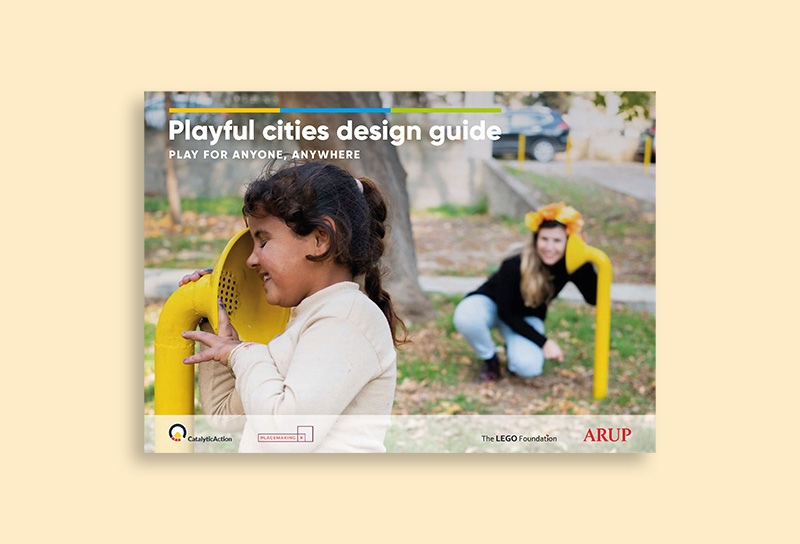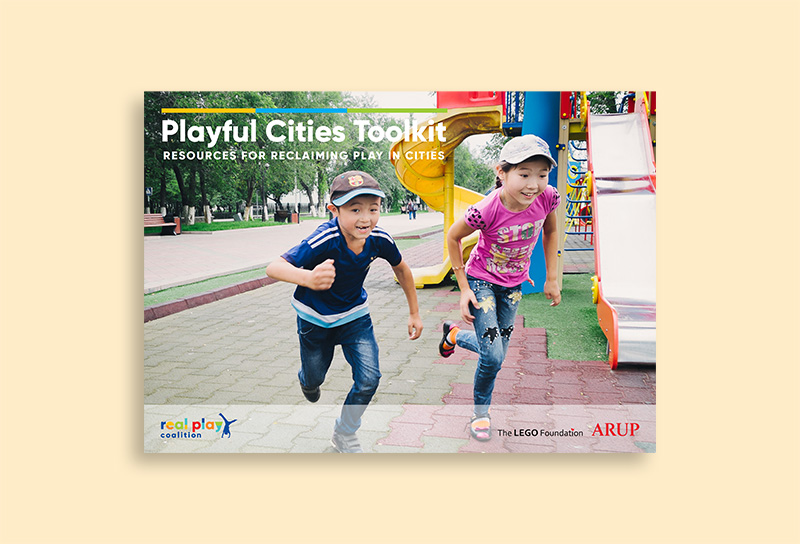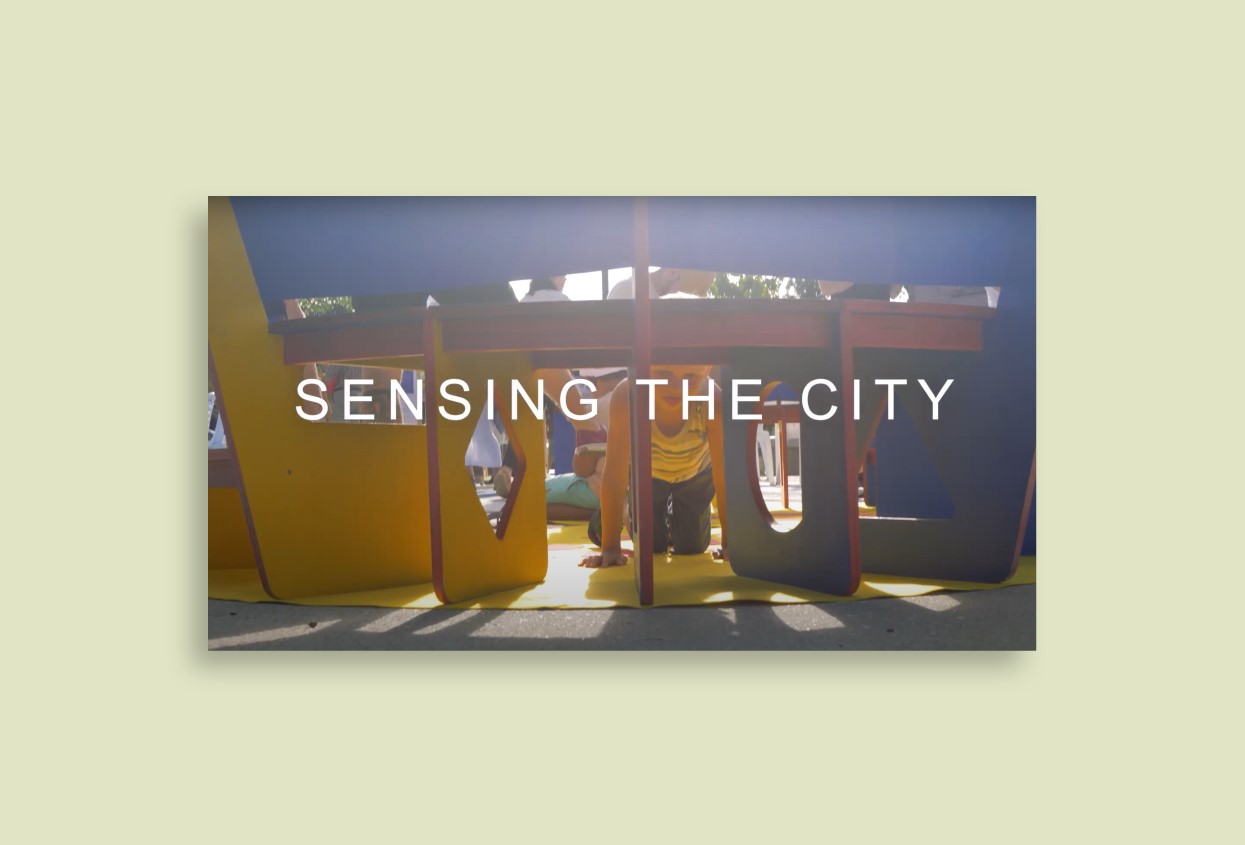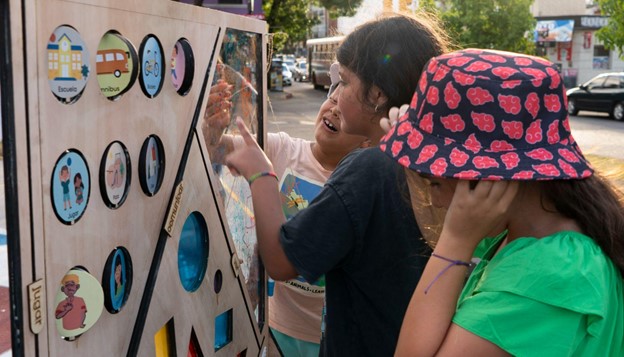
Overview
Location:
Montevideo, Uruguay
Organisation:
Espacio Ludico
Partner organisations:
School 197; Montevideo LAB
Year:
2022
Scale of proximity:
Neighbourhood
Target beneficiaries:
Children 0-5; caregivers; deaf community
Advocating for new approaches to inclusive urban design
Cities are full of opportunities to learn, play and find community. But not everyone has access to these opportunities unless we make public spaces inclusive. That’s what our project, Sensing City, is aiming to do. It advocates for and proposes public spaces where deaf children and their caregivers feel they are included.
Our main focus is on supporting children, in particular deaf children, from School No. 197 in Montevideo which has around 100 students from 5-12 years old. A nearby street giving access to the school is currently dominated by cars with narrow pedestrian paths, which makes it difficult for the school students to visit the square or use the neighborhood as an educational space. They don’t feel this neighbourhood and the city are designed for them, and rarely spend time in the open, public spaces. This project is also supporting caregivers, making the urban experience more welcoming, with resting places and play elements designed to foster child-caregiver relationship and their communication.
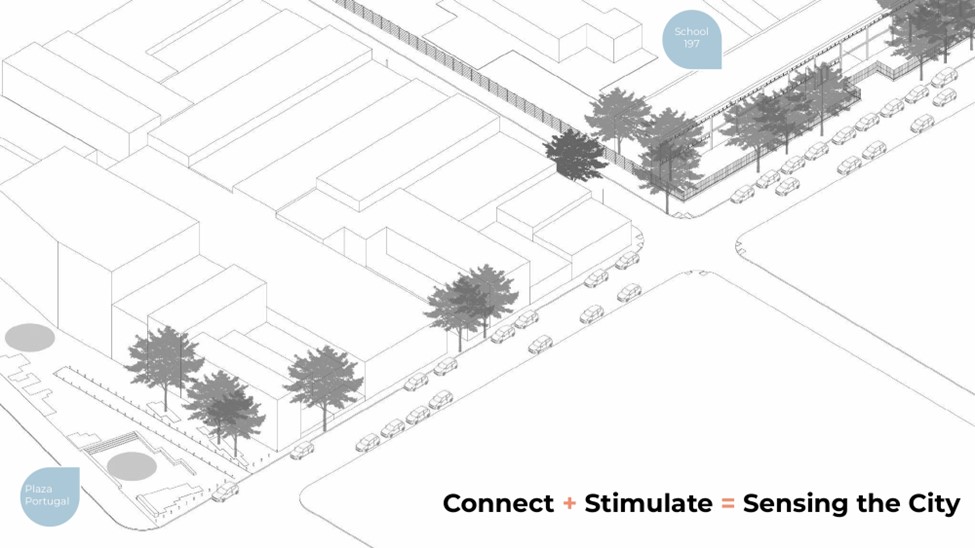
A car dominated street was identified as preventing school children from safely accessing the local public square, preventing its potential use as a play or educational space.
Understanding the needs of the deaf community
Our design approach is focused on integration – how can we use design to facilitate inclusive communication that brings the deaf and wider community together? To address this, our first step in the Proximity of Care approach was to understand the deaf community, their needs and aspirations, and to situate that in the Uruguayan context. The existing literature and urban design practice is limited, and mostly focused on disabilities in general without specific insight into the needs of deaf people and even less focusing on the communication barriers deaf children face.
To tackle this challenge, we held various sessions with the local community to better understand how our project can support the needs of deaf children and their caregivers. Developing design activities for deaf children encouraged us to think about playful ways to engage them in the design process, and taught us a lot about the importance of the physical environment in facilitating sign language and ways of communicating when speaking and listening is not an option. It was a unique opportunity to grow our participatory design practice in an unknown and urgently needed direction.
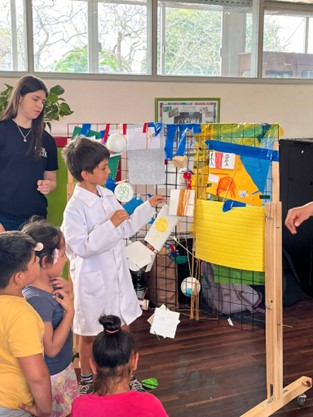
Workshops were designed to engage with young deaf children which made use of playful and visual materials to allow them to communicate their aspirations and needs.
Designing inclusively for young children, the deaf community and wider groups
The Proximity of Care principles and approach helped us to identify opportunities where our project could better support the neighborhood and its deaf community. The guide helped us to structure the assessment of the area according to different goals and to discover design intervention opportunities through relations between them. For example, we realised how deaf children feel safe, protected and stimulated only in their homes or in the specialised school we worked with. Using the Proximity of Care principles and focusing on the specific needs of this group of children, we developed a design brief that would increase the integration of the deaf community in the network of places that connect these two places – the school and their homes. Thus, our project was focused on the redevelopment of the streetscape and public square in the proximity of the School #197.
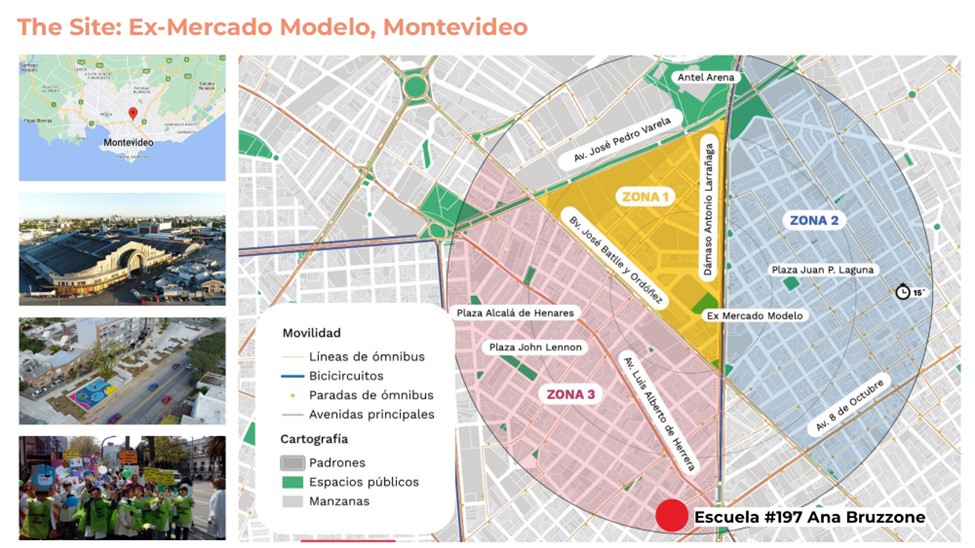
A site assessment was conducted not just on the intervention site, but on the wider neighbourhood and city to understand how the goals of the intervention could be connected across multiple scales.
With the Proximity of Care guide we realised the importance of focusing on early childhood when designing our cities, and how safe, stimulating environments support childhood development. This focus on early childhood and children’s relationships with caregivers strengthened our project, as we discovered that in most Uruguayan cases, many deaf children suffer with communication barriers that affect their development.
There are also elements of the project that benefit the whole community, such as the traffic spatial transformations; car speed will be reduced, crosswalks will be shorter and sidewalks will be wider allowing sign language communication. We’re also developing a stimulating and educational path, creating an engaging walk for all ages and promoting the use of different senses and the body for exploring our city.
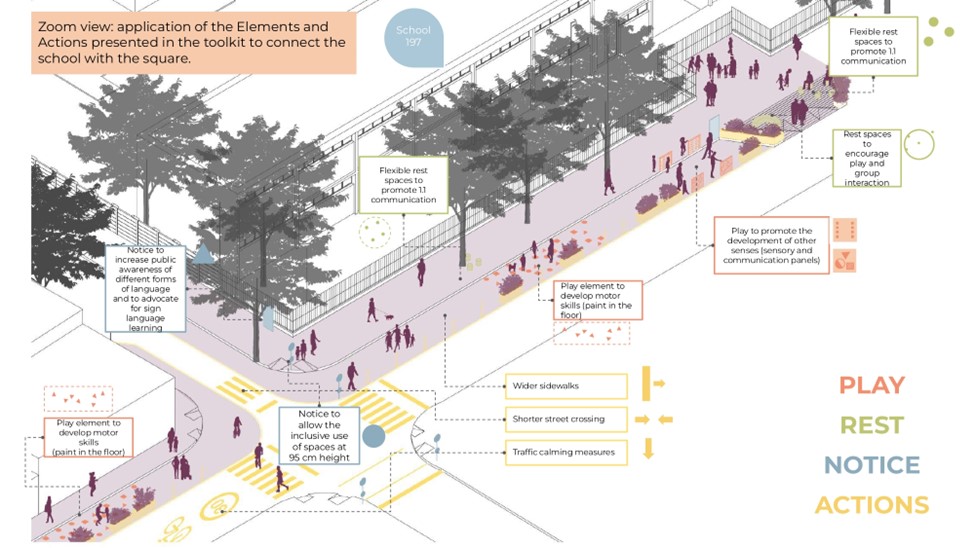
The concept design considers the needs of deaf children by incorporating wider side-walks and inclusive seating to facilitate communication, as well as including elements to be used and enjoyed by the wider community.
Influencing behaviour change through urban design
The Proximity of Care approach made us more aware of the influence of the project; defining our audience personas, designing the core messages we want to communicate to them and learning strategies to improve the way we promote our project and engage our audience in becoming advocates for a positive change. As part of our intervention, we invited creatives and urban practitioners from Montevideo to take part in the competition for designing a poster for promoting the integration of deaf community in public spaces in Uruguay. This activity raised the interest of the local community in this topic, bringing together experts in urban design and planning, early childhood development, sign language, as well as teachers, students and caregivers from the School #197.
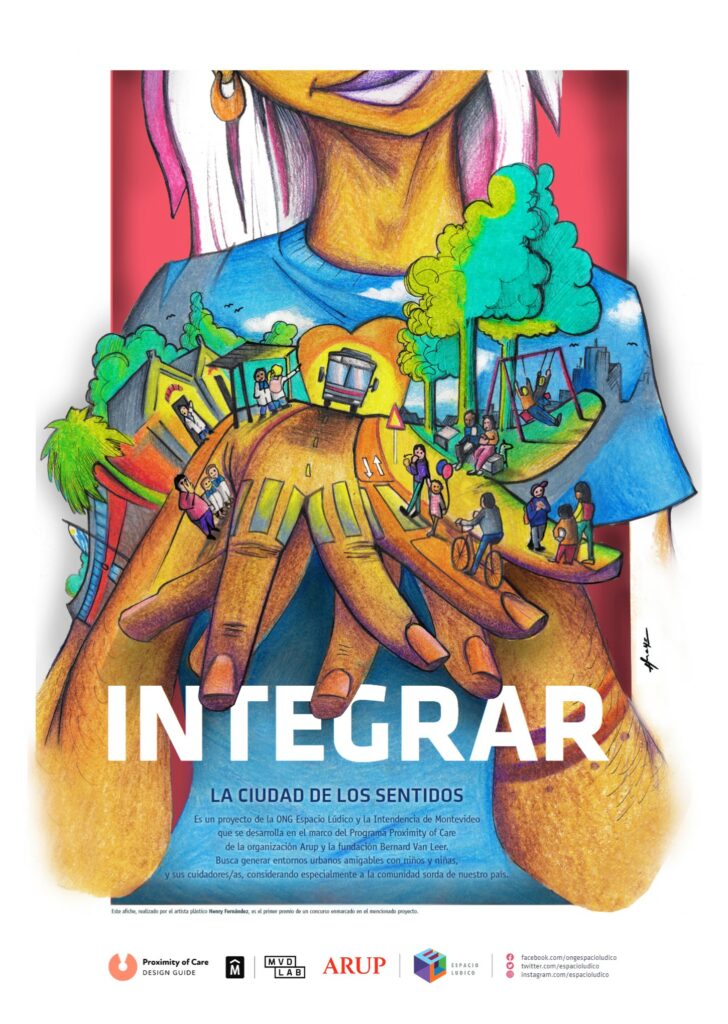
The winning poster from a design competition on representing the concept of integration represents the city as a woman signing the gesture for “integration” in sign language, illustrated to include the coming together of schools, public squares and everyday situations, with people sensing the city in different ways.
Once we learned the importance of how to better communicate the project and the right audiences to target, we had a better understanding of the internal resources needed to design the core messages, the communications strategy and the time needed to measure the impact of our design and advocacy plan.
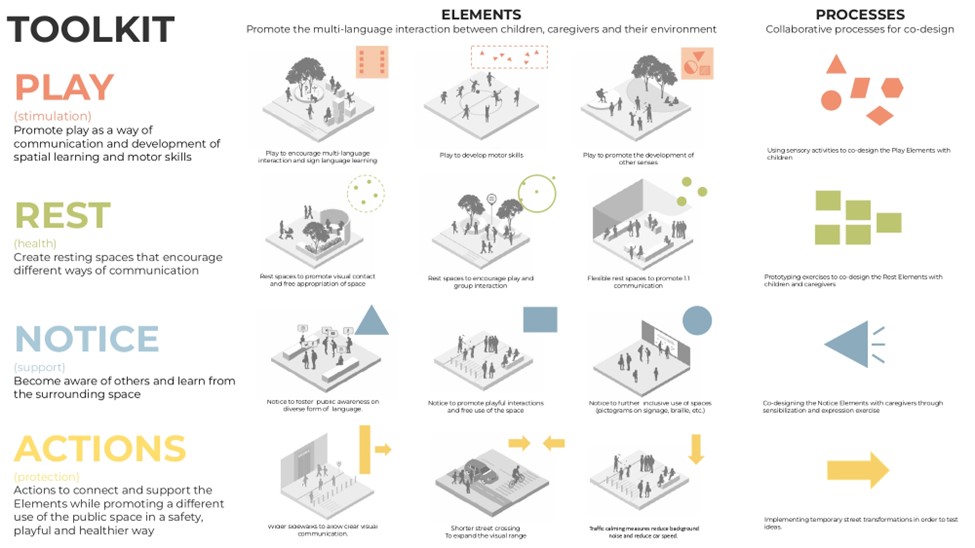
A toolkit of design elements which promote multi-language interaction between children caregivers and their environment is planned for the next stage of the project, developed to be used by other organisations and local municipalities across Uruguay.
The Proximity of Care guide also helped us to think beyond the design itself and to focus on behavioral change and processes. Design is only one component of the process that has the power to achieve true transformation of the urban realm. Understanding that our project, even though located in the public space, could have an impact and change behaviours of children and caregivers at the household level was a big revelation. The next task was to identify ways of working towards this goal. For example, our project is implementing elements that support inclusive communication in the public space, with the intention of fostering better interaction and understanding between children and their caregivers generally. By bringing these design changes in the street and square surrounding School No. 197, our project will significantly increase the city area in which deaf community feels safe, comfortable and playful.
In January 2023, we ran a set of workshops and tested two prototypes for improving the child-caregiver interaction in the Plaza Portugal. The interactive panel, co-designed with children from School #197 was a way to test an urban element that would stimulate play and interaction between deaf children, their caregivers and others. It was comprised of several sections, each testing a different way of communication: (1) moveable parts that teach sign language for neighbourhood-related words, (2) vibration, (3) touch and texture, (4) puzzles about the public space, (5) transparent panel for drawing and looking, (6) secret storage for smells. The second prototype was a mock-up bench that was designed with the needs of deaf children in mind. Circular shape enabled sign language communication (through looking at each other), while the space below the seating offers an exploration polygon for babies and toddlers. These prototypes were tested by the school children, neighbours and local visitors. We followed and documented the process through structured video observations, surveys and interviews, together with the participatory department from the local municipality – Montevideo LAB.
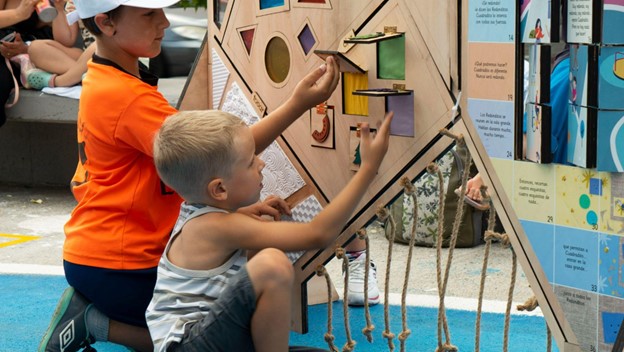
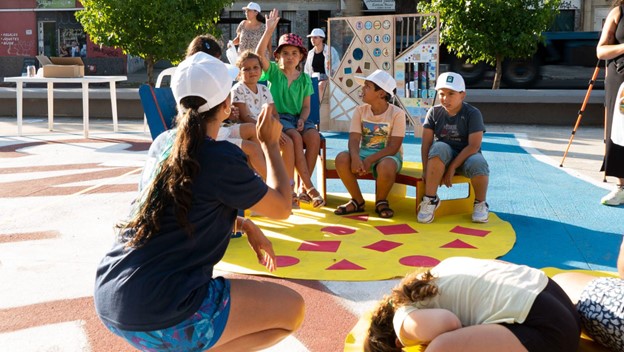
Sensing the City Pilot Project: After meeting with neighbours and co-designing urban furniture with deaf children, Espacio Ludico tested the project ideas and prototypes with the local community. Top: interactive panel; bottom: circular bench.
On the day, we also tested a few traffic regulation options with the local community and municipality, and held a panel about communication through different senses in the city. Throughout the day, there were people distributed around tables and chairs, that constantly translated between words and signs, and made everyone feel heard and included. It was a weekend full of emotions and ideas, where people in Montevideo had a chance to experience what it means to really understand and empathise with the experiences of others, and different ways of being in the city. It takes a lot of imagination to be able to understand what it means to walk in someone else’s shoes, but this is an essential prerequisite for building an inclusive city.
For the first time, we felt we are getting to understand what an inclusive city is, beyond ideas and labels.
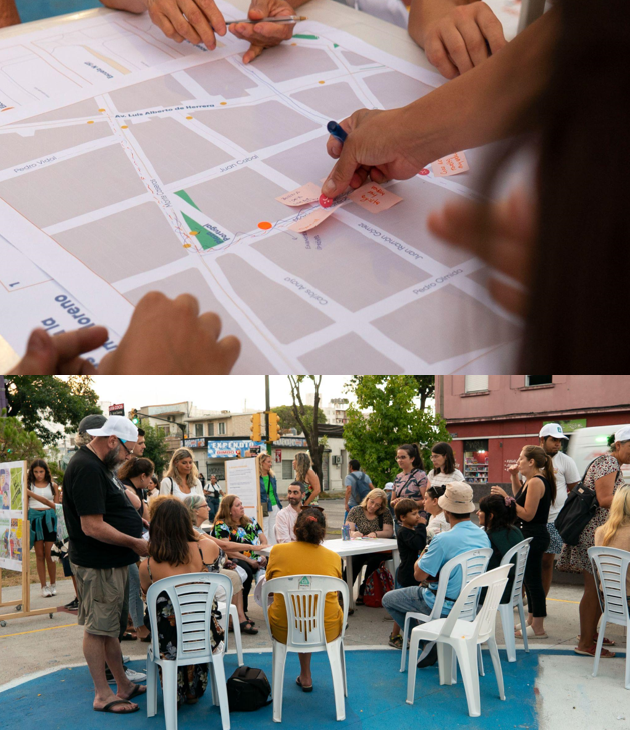
Top: Testing the traffic options with neighbours; Middle: simultaneous translation from and to the sign language; Bottom: workshop about experiencing the city through different senses.
Defining success for inclusivity in the ‘Sensing the City’ project
In order to define our project as successful, we’re aiming to:
(1) Improve interaction between deaf children and their caregivers in public space, as well as the integration among deaf and non-deaf children.
(2) Create public space opportunities for motor, sensorial and social development of deaf children from 0 to 5.
(3) Encourage the use of the Plaza Portugal and the public space surrounding School 197 as a space for learning.
(4) Increase the use of the public space in front of School 197 and the Plaza Portugal by children from 0 to 5 and their caregivers.
(5) Make the wider community aware of the importance of a secure, healthy, and stimulating public environment for children’s development, particularly for deaf children from 0 to 5 years old.
(6) Intensively collaborate with the Montevideo LAB (participatory department of the City Council) in strengthening their inclusive design approaches.
(7) Redesign the streetscape in collaboration with the City Council, to make it more safe and accessible to deaf children.
(8) Contribute to the knowledge and urban design practice for deaf community.
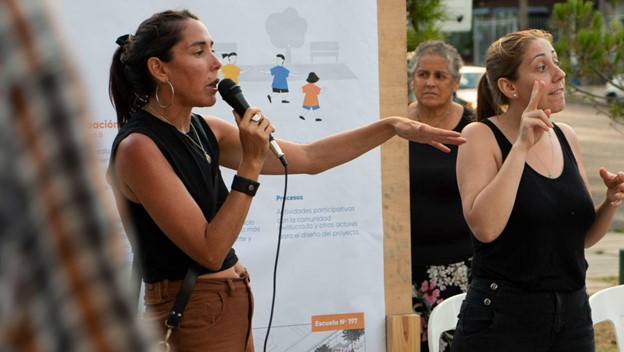
The inclusive concept design is promoted at the pilot event to receive feedback from the wider community, facilitated by a sign-language interpreter.
Four lessons from the Proximity of Care Guide that can be applied to any design project
The Proximity of Care guide served as an excellent tool to understand the area, and to learn from its challenges and opportunities in order to propose better design solutions. It supported us in strengthening how we communicate about the project, not only with deaf children and caregivers who were part of the whole process, but also with the wider community, decision makers and advocates. In this sense, the guide could easily be applied to other projects in our city and its lessons and principles should accompany all our projects.
We’ve learnt some important lessons along the way, that could be applied to any design project aiming to support local communities:
(1) Firstly, start the process by analysing and understanding the Proximity of Care dimensions and goals.
(2) Take the time to prioritise the different factors relevant to your urban context, time, and resources available.
(3) With a preliminary analysis and site visit, do transect walks to better understand your audience and discover opportunities for audience engagement.
(4) Lastly, define the methods you will use to approach the site and identify the challenges and opportunities according to the behaviour change principles.
Links and sources

